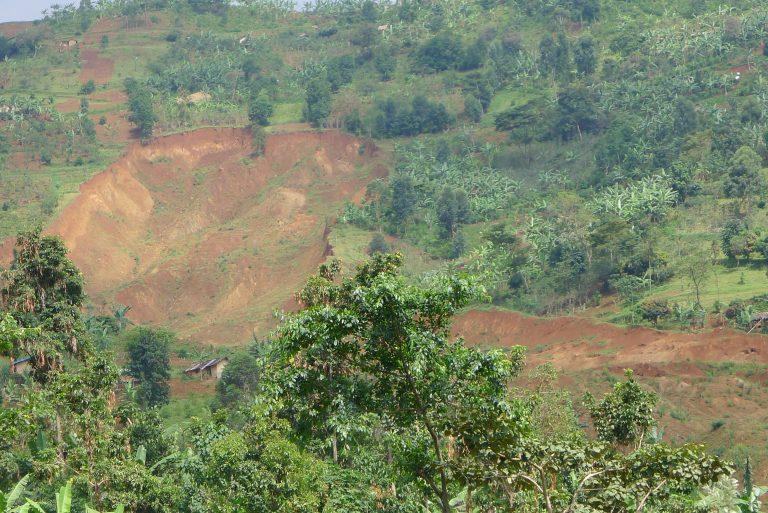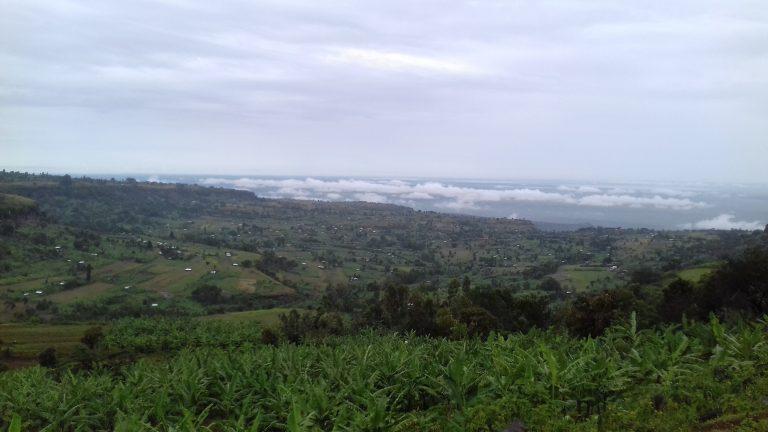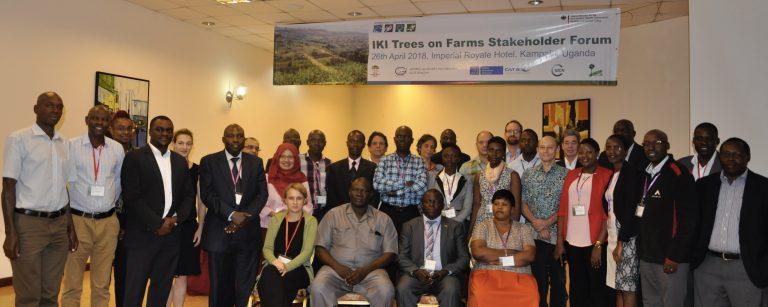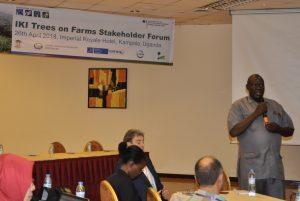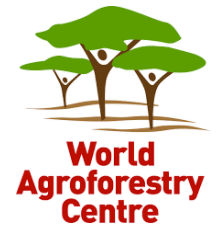Uganda Will Use Trees on Farms to Meet National Biodiversity Targets
Trees on farms in Uganda are the focus of a new strategy aimed at increasing biodiversity on agricultural land
Expansion of agriculture is one of the main drivers of global deforestation and loss of habitat. Like many other countries in the world, Uganda has experienced severe deforestation, with forest cover declining by nearly 60 percent from about 5 million hectares in 1990 to just under 2 million in 2015.
While the country is now making progress in conserving the remaining state-owned forest areas, tree cover on private land continues to decline at an alarming rate. Seemingly in contradiction, Uganda’s biodiversity, which relies on trees for its very survival, forms the backbone of a flourishing tourism industry that is a major contributor to the economy. Yet without the trees on farms and in privately-owned forests that allow a wide diversity of animals and plants to flourish and spread outside protected areas, this rich heritage is under grave threat, with associated ramifications not only for tourism.
The nations of the world have committed to conserve and sustainably use biodiversity under the United Nations Convention on Biological Diversity. Part of this commitment is to ensure that benefits from conserving biodiversity are equitably shared. Uganda ratified the convention in 1993 and has since put in place mechanisms for implementation, including legislation and a National Biodiversity Strategy and Action Plan. One of the key instruments is sustainable management of entire landscapes, including agricultural areas, which also supports the country’s commitments to the United Nations Framework Convention on Climate Change.
To support Uganda in its efforts, the country was selected to take part in a global project supported by Germany’s Federal Ministry for the Environment, Nature Conservation and Nuclear Safety through the International Climate Initiative. The project, Harnessing the Potential of Trees on Farms for Meeting National and Global Biodiversity Targets, also includes Costa Rica, Honduras, Indonesia, Peru and Rwanda.
“The project’s approach is to establish ‘innovation platforms’ that bring together government, businesses and communities,” explained Anja Gassner, project leader and senior livelihoods’ specialist with ICRAF. “The platforms will help create roadmaps or strategies that help the Government improve existing, or come up with new policies and programs that feature better integration of the contribution of trees on farms to national and international sustainability targets. New financing mechanisms that can support implementation of the strategy will be identified. The long-term aim is greater use of trees on farms so that farmers will not only improve their livelihoods and increase the diversity of organisms, but also sequester more carbon and other greenhouse gases on their land. The project will help the Government work with farmers to identify various agroforestry options and assess the effect on biodiversity of each one.”
Trees on Farms for Biodiversity(short name) will be implemented in close collaboration with Uganda’s Ministry of Agriculture, Animal Husbandry and Fisheries and the Ministry of Environment and their associated agencies.
“Much as the project talks of farm land,” said Simon Mugabi, Commissioner for Environment Sector Support Services, at the opening workshop in Kampala on 26 April 2018, “the benefits will go beyond the farm, to even those who don’t own land. The ecosystem services produced by trees on farms will be enjoyed by others. We welcome the project as it will help us meet our international obligations and will contribute to our National Development Plan, National Biodiversity Strategy and Action Plan, National Forest Plan, and Forest and Landscape Restoration targets.”
In support of the key focus of the project, Stephen Muwaya of the Ministry of Agriculture, Animal Husbandry and Fisheries noted that, “Integrating agroforestry into farming systems ensures diversity to achieve food security. Agroforestry is one of the sustainable land management practices that we promote in Uganda.”
Stephen Galima of the National Forest Authority echoed Muwaya: “It is very clear that agroforestry holds the key both for livelihoods and biodiversity, but we need coordination. We need facts and figures and a national agricultural strategy that supports inter-organizational coordination and collaboration.”
A new strategy, similar to the one proposed by the project for conserving biodiversity, will also require new mechanisms of funding. Uganda’s National Biodiversity Trust Fund has been established to link finance with conservation initiatives, bringing together a broad spectrum of groups to leverage resources. The Fund also offers technical expertise in biodiversity management, focusing on landscapes and management requirements.
“Biodiversity financing is a key issue in Uganda,” stated Simon Peter Weredwong of the Fund. “We need to engage in conservation as a business model. If there are no returns on investments, people will be demotivated. So, we must change from the business-as-usual approach of simply seeking funds and look to revolving funds as a new model for rethinking conservation.”
One of the sites in Uganda will be the Mount Elgon sub-region, which is of critical importance to biodiversity conservation and ecosystem services, and one of the long-term socioecological research sites established as part of the Sentinel Landscape Initiative.
Trees on Farms for Diversity will run for four years from April 2018. It is led by the World Agroforestry Centre in partnership with Centro Agronómico Tropical de Investigación y Enseñanza, Center for International Forestry Research, International Union for the Conservation of Nature, University of Hannover and the University of Göttingen.
About the World Agroforestry Centre
The World Agroforestry Centre is one of the 15 members of the CGIAR, a global research partnership for a food-secure future. We thank all donors who support research in development through their contributions to the CGIAR Fund.

